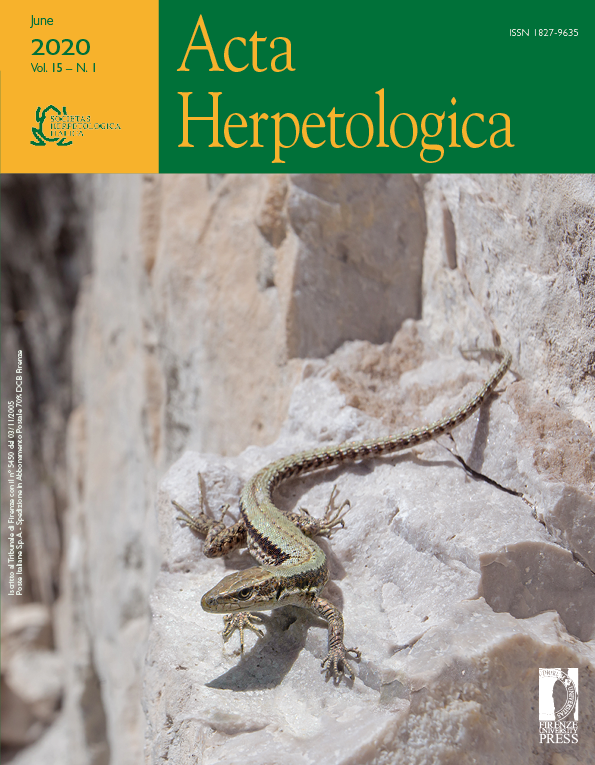Genetic characteristics of an introduced population of Bombina bombina (Linnaeus, 1761) (Amphibia: Bombinatoridae) in Moselle, France
Published 2020-05-17
Keywords
- Invasive species,
- population genetics,
- conservation,
- Cytochrome b,
- microsatellites
How to Cite
Abstract
The fire-bellied toad Bombina bombina has recently been introduced in Moselle, north-eastern France, in an area where the yellow-bellied toad Bombina variegata occurs naturally. Both species hybridize in a wide area throughout Europe where their distribution overlaps. Therefore, there is a risk of introgression regarding the Bombina variegata population in north-eastern France. In order to assess the status of the introduced population of Bombina bombina and its origin, we investigated its genetic characteristics and structure using both mitochondrial (cytochrome b) and nuclear DNA (microsatellites markers). The results demonstrated a lack of introgression in the Bombina variegata population. Though experiencing a bottleneck effect, the introduced Bombina bombina population displays a high genetic diversity. If a propensity for expansion is found within the introduced population of Bombina bombina, it could be considered as a potential invasive species in France, and thus threaten the native species.






